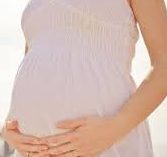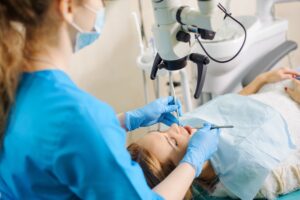Header logo
header top contact widget
Receded Gums
Boost Immune System By Investing In Gum Health
Posted on Nov 17, 2022 by William J. Claiborne, DDS MS
There is no argument that the price of about everything has gone up and up over the past couple of years. The challenges that most individuals face at this time have been significant for some people but felt by about all.
Yet, there are still reasons to “spend less now so we’re not spending more later.” This is true with things such as auto maintenance, home repairs and taking good care of our health. A signifiant part of maintaining good overall health is having good oral health. The key, however, is to make the investment while the costs are still low, and avoid the big expenses later to pay for repairs and more extensive treatment.
I’d like to point out the need to bolster our immunity system, brought front-&-center during the pandemic, is actually supported by your oral health. Although the Covid virus continues to be a threat, the experience has made populations more aware of the benefits of vaccines and healthy habits such as hand-washing. Still, it is in our immune system that makes people more or less vulnerable.
By investing in having healthy gums, the immune system is actually supported more than is largely known. I’ll explain.
The bacteria in the mouth, or “oral cavity,” is intricately connected to your overall health; so much so that “bad” oral bacteria can disrupt the healthy balance in the digestive system. This bacteria comes from oral plaque, which is a cesspool of sorts formed from bacteria accumulation.
As a layer of biofilm, plaque coats teeth and gums. It is the sticky coating you feel in your mouth when you wake up, during which time the bacteria has had an opportunity to amass during sleep. Plaque, mot removed, becomes tartar. This hardened mass of oral bacteria continues to grow, doing damage in the mouth and far beyond.
Researchers have tracked oral bacteria as it enters the bloodstream. This occurs through weakened gum tissues, allowing the bacteria to travel throughout the body. Studies have shown that the bacteria are able to activate or worsen the development of a number of serious health problems.
These include heart disease, stroke, arthritis, diabetes, preterm babies, some cancers, erectile dysfunction and dementia. Research is currently being conducted to further the connections suspected between periodontitis to Alzheimer’s disease.
How does oral bacteria become destructive? Gingivitis is the initial stage of gum disease. Symptoms typically include gums that are tender in spots and some bleeding when you brush. These are warning signs that signal an immediate need for attention.
Periodontal (gum) disease and (often) its subsequent tooth loss are, simply put, products of bacterial overload in the mouth. The mouth is constantly being supplied with sustenance for these organisms. Bacteria are able to thrive through food that enters, especially sugars, and other bacteria-laden items put into the mouth.
The bacteria that cause cavities that feeds on sugar from the foods and drinks you consume. This weakens tooth enamel due as bacteria convert sugar into acids. As bacteria thrive, they are able to reproduce very rapidly.
When bacteria levels become more than the immune system can tackle, infection can set in. Accumulation of bacteria can evolve into gum disease, which is an inflammation that attacks teeth, oral tissues and the bone structures that support tooth roots.
Gum disease symptoms are those more prominent than gingivitis. These include sore gums that bleed when brushing, persistent bad breath, gums that pull away from the base around teeth, gums that darken in color.
As it worsens to the stage known as periodontitis, pus pockets may form on the gums at the base of some teeth. In advanced stages, gum disease causes teeth to loosen and eventually require removal.
The reason that 6-month dental check-ups and dental cleanings is to remove tartar buildup before damage can occur. Your hygienist and dentist can look for signs of gum disease so measures can be taken before the disease explodes into the need for more costly treatment to resolve the problem. Since gum disease is the nation’s leading cause of adult tooth loss, the associated expenses of replacing teeth can also be avoided by maintaining good oral health.
Prevention begins at home: Begin by twice daily brushing with a soft bristle tooth brush and use a fluoridated tooth paste. Brush for at least two minutes each time. Floss daily. Be sure not to pop the floss between teeth to avoid damaging tender gums. Move the floss in a back-&-forth motion between teeth to ease it down so you can scrape the sides of each tooth.
You can remove a tremendous amount of oral bacteria by using a tongue scrapper daily. Or, brush your tongue with your tooth brush at the end of each brushing. This helps to dislodge bacteria that is embedded in the grooves of the tongue.
Drink lots of water during the day. This will help keep saliva flow at ample levels. Saliva is designed to move oral bacteria from the mouth on a consistent basis. Oral dryness is the enemy. Avoid foods and beverages that are drying to oral tissues such as caffeine, alcohol, and spicy foods. Also, try to minimize the amount of sugar and carbohydrates you consume. These foods amplify the reproduction of oral bacteria.
Oral dryness gives bacteria a favorable environment for reproduction. The chemicals in cigarette smoke are very drying to oral tissues. If you smoke, consider using an oral rinse that replenishes moisture in the mouth. Some oral rinses are specifically designed for moisture.
Lowering treatment costs begins with early care: If you have delayed or avoided regular dental care, it is recommended that you begin by having a periodontal examination. A periodontist is a dental specialist who can determine your precise level of gum disease and the most appropriate treatment to restore good oral health. We can detect all stages of gum disease and provide comfortable, thorough treatment to restore your gums to a health state.
If you have lost teeth due to periodontal disease, a periodontist also specializes in the diagnosis and placement of dental implants. This ideal method to replace teeth provides a lifetime solution, making them an excellent investment.
Call 828-274-9440 if you have questions about your gums or if you are experiencing any symptoms associated with gum disease. Also, visit our web site to learn more about our sedation options (including “twilight sleep”) and advanced technology, which often reduces treatment time while enhancing comfort.
Visit: https://www.biltmoreperiodontics.com/
Does Obesity Lead To Gum Disease?
Posted on Sep 21, 2022 by William J. Claiborne, DDS MS
What are the two most common diseases in the U.S. today? Obesity and gum (periodontal) disease. Studies are now showing that these two conditions may be related.
However, tracking down “cause and effect” have not been achieved as yet. What is known, however, is that changes in body chemistry affect metabolism, which, causes inflammation, a common element they share. People who have periodontal disease are more susceptible to inflammation, which in turn makes them more susceptible to obesity.
One new study analyzed data from population subsets at one point in time in order to explore potential connection of pathways between obesity and gum disease. Researchers noted an increased risk to develop gum disease for those with higher body mass index (BMI), waist circumference and percentage of body fat.
Certainly, there are a number of risk factors for developing periodontal disease. These include:
• Smoking or chewing tobacco
• Poor oral hygiene and lack of dental care
• Consumption of sugar and other foods that increase oral acid levels
• Aging
• Being diabetic
• Many medications (including steroids, antidepressants, cancer therapy drugs, some calcium channel blockers and oral contraceptives)
• Improper fitting of dental appliances (dentures or partials)
• Pregnancy
Common signs and symptoms of gum disease are:
Gums that bleed easily
Red, swollen, tender gums
Persistent bad breath
Gums that pull away from the teeth (recede)
Changes in the way teeth fit together when biting
Changes in the fit of partial dentures
Permanent teeth that loosen or separate
Initially, gum disease begins with plaque accumulation. Plaque is the sticky film that coats teeth and gums that is usually most obvious when first waking in the morning. The film consists of bacteria, which can penetrate below the gum line. If not removed on a regular basis (preferably daily), plaque will harden into a bacterial mass known as tartar.
Plaque and tartar bacteria cause the gums to become inflamed. The tight grip around the base of teeth (which helps to seal out bacteria) will loosen. Thus, “pockets” of bacteria are able to form between the teeth and gums that become infected. As the disease worsens, these pockets deepen and gum tissues and the structures that support teeth are destroyed. Teeth can become loose and may have to be removed.
Gum disease is the nation’s leading cause of tooth loss. Research has also found links between the infectious bacteria of gum disease to other diseases affecting overall health. These include an increased risk of heart disease and stroke, diabetes, respiratory disease and preterm babies.
The prevalence of gum disease in the U.S. is at an alarming rate – affecting up to 50% of the adult population (ages 30-70) and 90% of adults over the age of 70. Yet, the obesity rates in America are at concerning rates as well.
According to the Centers for Disease Control & Prevention, U.S. obesity prevalence increased from 30.5% to 41.9% from 2000 – 2020. The highest percentage was among adults aged 40 to 59 years – 44.3%. (North Carolina ranks at 33.6%.) A healthy BMI is 18.5 – 24.9.
But, back to the gum disease-obesity connection…
A 2009 study showed that individuals with excess weight had twice the rate of periodontitis (advanced gum disease) and triple the rate for individuals with severe obesity. This was shown even after adjustments for other risk factors such as smoking, age and other medical conditions.
A leading factor lies in the fat cells, which were previously thought of as storage for energy. Now science has determined that fat cells produce a number of chemical signals and hormones, substances that lead to higher inflammation in the body. This, in turn, hampers the ability of immune system effectiveness. The inflammation add to the likelihood of periodontal disease.
As a periodontist in Asheville NC, I utilize some of the most advanced technology in the region to detect all stages of gum disease and restore the gums to a healthy state. This is true for all stages of gum disease, even the advanced level of periodontitis.
Depending on the level of disease, we can restore the tooth supporting structures (bone, gum tissue and ligaments) through thorough cleaning, tartar and plaque removal, and treating the deep pockets of infected tissue. Treatment is performed safely and comfortably, with oral and I.V. sedation (twilight sleep) available as needed.
When the severity of the disease requires surgical measures, we are fully skilled and equipped to restore oral health. We also assist restored patients with maintenance of proper oral hygiene for long-term success.
Understanding the relationship between obesity and risk factors that lead to periodontal disease is very important. If you have signs or symptoms of gum disease, please know that this condition will only worsen without treatment. The earlier your treatment, the less complex the treatment will be.
Call 828-274-9440 or visit: https://www.biltmoreperiodontics.com/services/periodontal-gum-treatment/
Sources:
https://www.colgate.com/en-us/oral-health/threats-to-dental-health/periodontal-disease-and-obesity
https://www.obesityaction.org/resources/obesity-and-periodontal-disease/
https://www.sciencedaily.com/releases/2019/12/191203082858.htm
Choose A Periodontist To Correct A Gummy Smile
Posted on Aug 29, 2022 by William J. Claiborne, DDS MS
About Periodontal Plastic Surgery
When Lauren Hutton, the model well-known for a space between her front teeth, began modeling, she felt she needed to camouflage the gap (or “diastema”). Yet, she soon began to feel it was a unique feature that set her apart from the others. She was right, and now at the age of 77, she’s been on more front covers than nearly any other model.
Each smile is unique. Hopefully, your smile makes you feel good every time you share it. And, the very act of smiling has been shown to release endorphins in the brain. Those are the chemicals that create a bit of a ‘natural high.’ Smiling is obviously an asset to our well-being.
If you have a “gummy” smile, you may be perfectly fine with it. After all, it is not detrimental to oral health if you care for your gums properly (which goes for everyone). And, it can be a positive part of your personality. Katie Couric has a gummy smile and shares hers openly.

“Gummy” Smile
However, not everyone with this trait feels comfortable with the look nor the way it makes them feel when smiling. Some people tend to suppress a full smile. Others often conceal their smile with a hand when smiling fully or laughing. Some people smile with their lips only.
A gummy smile, in the periodontal specialty, is known as EGD, an abbreviation for excessive gingival display or a gingival smile (GS). The trait occurs more often in females than in males. (Gingival is of or relating to the gums.)
Esthetically, a balanced smile typically shows the front top 6 or 8 teeth. Arching each tooth, there is generally minimal gum tissues showing , and sometimes none. Another esthetic complement to a smile is having gum tissues that show a slight arch over each tooth at a similar line as those that arch adjacent teeth. Gums that are lower over one or two teeth tend to create a jumbled look in a full smile.
When the height of gum tissues distract from the appearance of a smile, a periodontist is your expert. This dental specialist has specialized skills in all aspects of oral tissues. Through their advanced training, they are able to safely and beautifully reshape the tissues that surround teeth.
For people who wish to have a gummy smile or uneven gum line re-contoured, a periodontist performs a gingivectomy. A gingivectomy is a procedure during which excess gum tissue is remove. During this, the gumline is sculpted to give your smile balance with a more even smile line.
In addition to repairing a gummy smile, a gingivectomy is involved in a procedure known as crown lengthening. Crown lengthening involves removing the excessive gum tissue to expose more of the crown of the tooth, as well as sculpting the gumline to make it higher up. After the gum tissues are shaped, a crown is typically placed to protect the tooth above the gum line and to create a more beautiful smile.
A crown lengthening may also help to save a tooth from removal. When a tooth breaks off near the gum line, a crown lengthening can be performed to expose a sufficient amount of the tooth’s base so it can support a crown.
Another procedure a periodontist expertly performs is gum grafting. This is often to cover exposed roots, to reduce further gum recession, protect vulnerable tooth roots from decay, and improve your smile. Recession can occur as a result of periodontal disease, which causes tooth roots to become exposed and makes the teeth look long.
Gum tissues are very tender tissues with many nerves. Procedures that involve the gums must be performed with precision to minimize discomfort and speed healing time. A periodontist excels in the skills to create an optimal outcome with the most conservative treatment needed.
Our Asheville periodontal dental office provides some of the most advanced imaging and computerized technology available. This includes cone beam 3D imaging and laser dentistry. Additionally, we provide oral and IV sedation (“twilight sleep”) so patients are able to relax or snooze comfortably while being monitored by specially-trained team members who use advanced safety equipment.
Begin with a consultation with an experienced periodontist, who can answer your questions thoroughly and determine the best treatment option for your individual needs. Call 828-274-9440.
Some sources:
https://www.colgate.com/en-us/oral-health/mouth-and-teeth-anatomy/3-treatment-options-for-a-gummy-smile
https://www.researchgate.net/figure/Female-and-male-percentages-in-the-gummy-smile-sample_tbl1_340258838
Pregnancy Gingivitis Can Affect More Than The Mother’s Health
Posted on Jul 14, 2022 by William J. Claiborne, DDS MS
Is there any other time in a female’s life when they must be as health conscious as during pregnancy?
Pregnant women, it seems, are given a long list of guidelines to follow… What they should not eat or drink, what medications to avoid, and even down to what beauty products to give up. Yet, the 9 months of discipline is well worth the greater potential to bring a healthy baby into the world.
Along with the other health guidelines, obstetricians are now urging pregnant women to pay particular attention to their oral health. For decades, research has tracked a correlation between inflammatory bacteria in the mouth to a number of serious health problems, including many far beyond the mouth.
Once the infectious bacteria of gum disease enter the bloodstream (typically through tears in weakened gum tissues), it can trigger inflammatory reactions, many serious and some that can have deadly consequences. It is the nation’s’ leading cause of adult tooth loss and has been linked to heart disease, stroke, some cancers, diabetes, arthritis, high blood pressure and impotency.
However, because of their susceptibility, the risk for full-blown gum disease is higher for pregnant females with nearly a third developing gum disease. Yet, it’s not just the oral (and overall) health of the mother that can be affected.
Research has shown that gum disease increases the risk for pre-term delivery (prior to 37 weeks) and babies of low birth weight (less than 5.5 lbs.). One study showed the preterm birth rate for females without gum disease to be approximately 11% compared to nearly 29% for pregnant women with moderate to severe periodontal disease.
One study showed that pregnant women with gum disease were 4 – 7 times more likely to deliver prematurely (before week 37) and underweight babies than mothers with healthy gums. Too, the women with the most severe periodontal (gum) disease delivered most prematurely, at 32 weeks.
Other findings show that gum disease increases the risks of late-term miscarriage and pre-eclampsia. When oral bacteria reach placental membranes via the bloodstream, inflammatory reactions can trigger pre-eclampsia or early labor.
In one study, for example, pregnant females with higher blood levels of antibodies to oral bacteria also had higher rates of preterm birth and babies of low birth weight. These elevated antibodies have been found in amniotic fluid and fetal cord blood samples of infants who were preterm or of low birth weight at birth.
Oral problems in pregnant females can begin even when the mother-to-be is following the same oral hygiene routine as they have previously. The greater susceptibility can be blamed on fluctuating hormone levels during pregnancy. These changes increase the risk for gingivitis (inflammation of the gums) and periodontal disease.
This is why approximately 40% of women develop gingivitis during pregnancy, known as pregnancy gingivitis. Pregnancy gingivitis is a mild form of gum disease that causes gums to become swollen, tender and bleed easily when brushing.
This is the result of an increased level of progesterone in pregnancy, which makes oral bacterial growth easier. Progesterone also makes gum tissues more sensitive to plaque. For those who have significant gum disease prior to pregnancy, being pregnant can make the condition worse.
Gum inflammation typically appears between months 2 and 8 of pregnancy. Signs of pregnancy gingivitis range from gums that are red rather than a healthy pink. Gums will often bleed when brushing teeth and be swollen and tender in spots.
The goal is to prevent pregnancy gingivitis before it occurs. Be committed to a thorough oral hygiene regimen at home, which includes brushing twice a day, flossing daily and swishing with an antimicrobial mouth rinse. Be sure to keep your 6-month cleanings and exams. These will remove any plaque buildup that has occurred between visits.
A periodontist has specialized training in the diagnosis and treatment of all levels of gum disease – in a way that is safe for pregnant women (as well as all patients). Signs and symptoms of gum disease include gums that bleed when brushing, frequent bad breath, swollen or tender gums, gums that loosen or pull away from the base of teeth, or gums that darken in color.
If you have any of these symptoms (whether pregnant or not), you are urged to schedule an appointment at your earliest convenience. Call our Asheville periodontal dental office at 828-274-9440 to arrange an examination to begin.
Recent Posts
Categories
Archives
- September 2024
- August 2024
- July 2024
- June 2024
- May 2024
- April 2024
- March 2024
- February 2024
- January 2024
- December 2023
- November 2023
- October 2023
- September 2023
- August 2023
- July 2023
- June 2023
- May 2023
- April 2023
- March 2023
- February 2023
- January 2023
- December 2022
- November 2022
- October 2022
- September 2022
- August 2022
- July 2022
- June 2022
- May 2022
- April 2022
- March 2022
- February 2022
- January 2022
- December 2021
- November 2021
- October 2021
- September 2021
- August 2021
- July 2021
- June 2021
- May 2021
- April 2021
- March 2021
- February 2021
- January 2021
- December 2020
- November 2020
- October 2020
- September 2020
- August 2020
- July 2020
- June 2020
- May 2020
- April 2020
- March 2020
- February 2020
- January 2020
- December 2019
- November 2019
- October 2019
- September 2019
- August 2019
- July 2019
- June 2019
- May 2019
- April 2019
- March 2019
- February 2019
- January 2019
- December 2018
- November 2018
- October 2018
- September 2018
- August 2018
- July 2018
- June 2018
- May 2018
- April 2018
- March 2018
- February 2018
- January 2018
- December 2017
- November 2017
- October 2017
- September 2017
- August 2017
- July 2017
- June 2017
- May 2017
- April 2017
- March 2017
- February 2017
- January 2017
- December 2016
- November 2016
- October 2016
- September 2016
- August 2016
- July 2016
- June 2016
- May 2016
- April 2016
- March 2016
- February 2016
- January 2016
- December 2015
- November 2015
- October 2015
- September 2015
- August 2015
- July 2015
- June 2015
- May 2015
- April 2015
- March 2015
- February 2015
- January 2015
- December 2014
- November 2014
- October 2014
- September 2014
- August 2014
- July 2014
- June 2014
- May 2014
- April 2014
- March 2014
- February 2014
- January 2014
- December 2013
- November 2013
- October 2013
- September 2013
- August 2013
- July 2013
- June 2013
- May 2013
- April 2013
- March 2013
- February 2013
- January 2013
- December 2012
- November 2012
- October 2012
- September 2012
- August 2012
- July 2012
- June 2012


